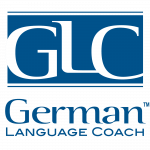
The definite article
A definite article (“the” in English) refers to a specific noun. In German, these are die, der and das, and all their various case and gender forms (dem, den, des, das, der, die etc.).
The indefinite article
An indefinite article (“a” or “an” in English) refers to a noun whose exact identity is not specified; not the bird, not that bird, but a bird. In German, this is ein(e) and its various forms.
Other articles, such as demonstrative articles like “this” and “that”, function similarly.
Dieser, mancher, jeder, etc., are demonstrative articles in German and follow the same rules as definite articles.
The adjective
An adjective describes a noun or pronoun by answering ‘what kind?’ or ‘which one?’ For example, the fast car, das schnelle Auto.
The adverb
An adverb describes a verb by answering ‘how?’ ‘when?’ ‘where?’ or ‘to what extent?’ In German, adjectives and adverbs look the same in their base forms (e.g. schön can mean “nice” or “nicely”); however, adjectives have endings when they precede a noun — adverbs never have endings.
The prepositions
A preposition shows the position of one noun or pronoun in relation to another. Example: He is sitting on the sofa.
Prepositions answer the same types of questions as adverbs. A preposition is used with a noun to form a prepositional phrase: on the sofa.
Instalment 3 is due next week.

One thought on “German grammar terminology (part 2)”